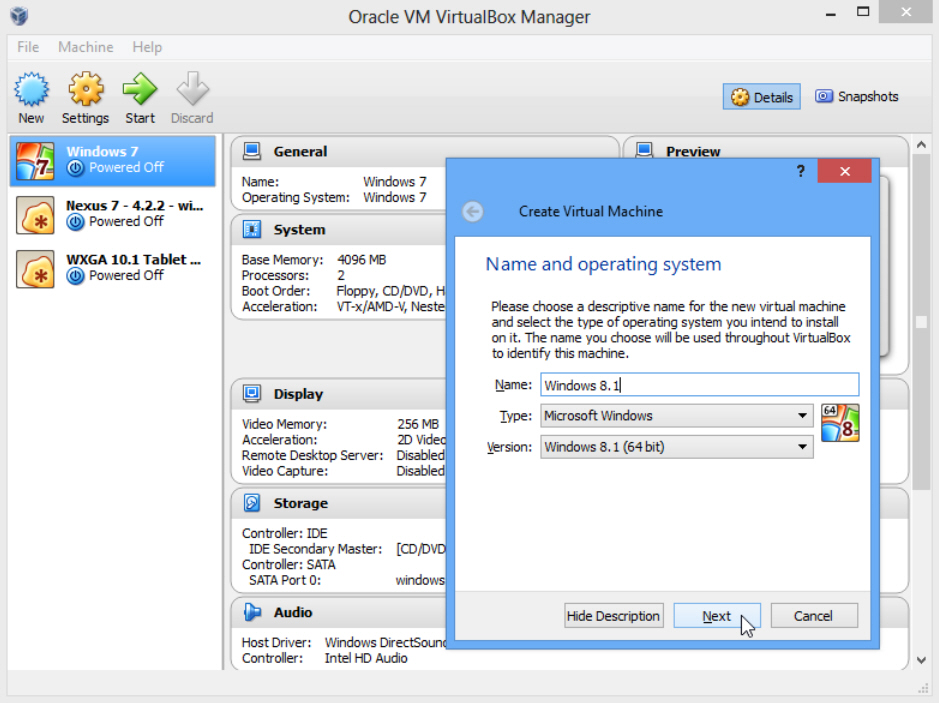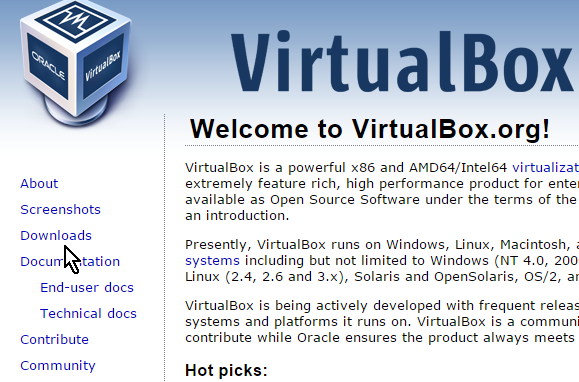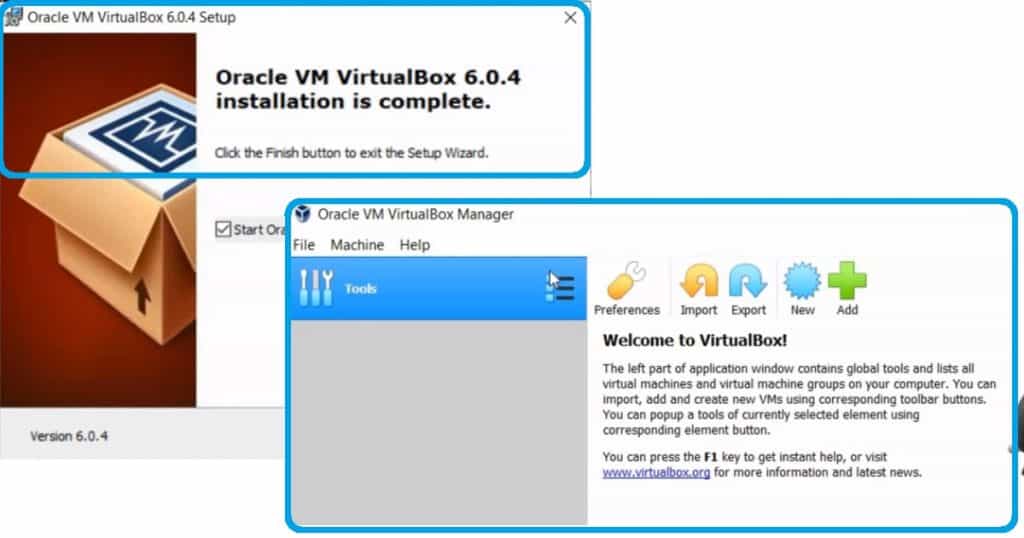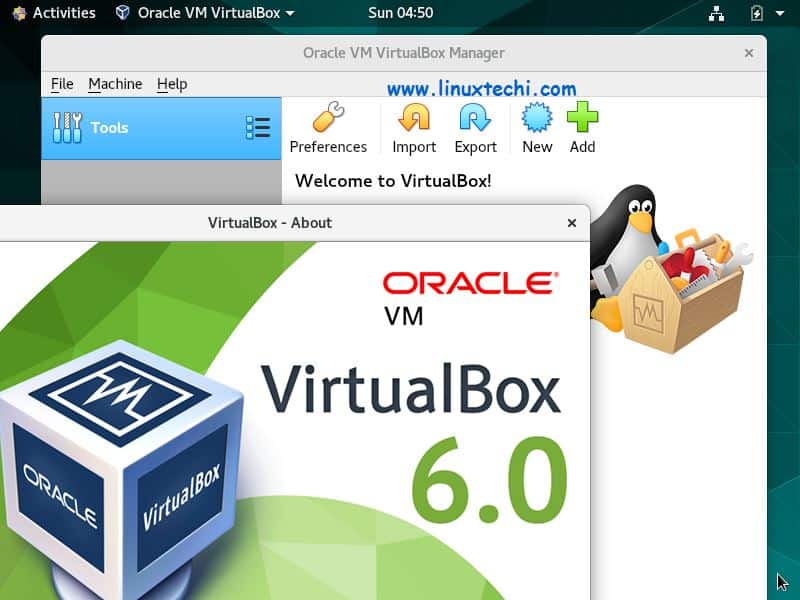
Guest Additions: support for multiple virtual screens in Linux and Solaris guests using X.Org server 1.3 and later. Storage: support for resizing VDI and VHD images see chapter 8.21, VBoxManage modifyhd, see the manual for more information.  Storage: support asynchronous I/O for iSCSI, VMDK, VHD and Parallels images. Resource control: added support for limiting a VM’s CPU time and IO bandwidth see chapter 5.8, Limiting bandwidth for disk images, see the manual for more information. Imported disks can have formats other than VMDK. Creation of the manifest file on export is optional now. Significant performance improvements during export and import. Open Virtualization Format Archive (OVA) support. Improvements to OVF support (see chapter 1.12, Importing and exporting virtual machines, see the manual for more information):.
Storage: support asynchronous I/O for iSCSI, VMDK, VHD and Parallels images. Resource control: added support for limiting a VM’s CPU time and IO bandwidth see chapter 5.8, Limiting bandwidth for disk images, see the manual for more information. Imported disks can have formats other than VMDK. Creation of the manifest file on export is optional now. Significant performance improvements during export and import. Open Virtualization Format Archive (OVA) support. Improvements to OVF support (see chapter 1.12, Importing and exporting virtual machines, see the manual for more information):. 
Intel HD Audio, for better support of modern guest operating systems (e.g.Intel ICH9 chipset with three PCI buses, PCI Express and Message Signaled Interrupts (MSI) see chapter 3.4.1, “Motherboard†tab, see the manual for more information.VMM: support more than 1.5/2 GB guest RAM on 32-bit hosts.
 Built-in creation of desktop file shortcuts to start VMs on double click (bug #2322). Machines can now be deleted easily without a trace including snapshots and saved states, and optionally including attached disk images (bug #5511 also, VBoxManage unregistervm –delete can do the same now). New “scale†display mode with scaled guest display see chapter 1.8.5, Resizing the machine’s window, see the manual for more information. Redesigned user interface with guest window preview (also for screenshots). Major rework of the GUI (now called “VirtualBox Managerâ€):.
Built-in creation of desktop file shortcuts to start VMs on double click (bug #2322). Machines can now be deleted easily without a trace including snapshots and saved states, and optionally including attached disk images (bug #5511 also, VBoxManage unregistervm –delete can do the same now). New “scale†display mode with scaled guest display see chapter 1.8.5, Resizing the machine’s window, see the manual for more information. Redesigned user interface with guest window preview (also for screenshots). Major rework of the GUI (now called “VirtualBox Managerâ€):.  New settings/disk file layout for VM portability see chapter 10.1, Where VirtualBox stores its files, see the manual for more information. Reorganization of VirtualBox into a base package and Extension Packs see chapter 1.5, Installing VirtualBox and extension packs, see the manual for more information. The following major new features were added: Creazione di icone sul dekstop per il lancio rapido di una Virtual Machine. Possibilità di limitare le risorse di CPU e I/O per ciascuna Virtual Machine. Supporto alle estensioni per aggiungere nuove features di terze parti. Tante succose novità per il noto software di virtualizzazione VirtualBox, recentemente passato nelle mani di Oracle (e prima ancora di Sun, e prima ancora di Innotek…) In breve le più eclatanti:
New settings/disk file layout for VM portability see chapter 10.1, Where VirtualBox stores its files, see the manual for more information. Reorganization of VirtualBox into a base package and Extension Packs see chapter 1.5, Installing VirtualBox and extension packs, see the manual for more information. The following major new features were added: Creazione di icone sul dekstop per il lancio rapido di una Virtual Machine. Possibilità di limitare le risorse di CPU e I/O per ciascuna Virtual Machine. Supporto alle estensioni per aggiungere nuove features di terze parti. Tante succose novità per il noto software di virtualizzazione VirtualBox, recentemente passato nelle mani di Oracle (e prima ancora di Sun, e prima ancora di Innotek…) In breve le più eclatanti:








 0 kommentar(er)
0 kommentar(er)
